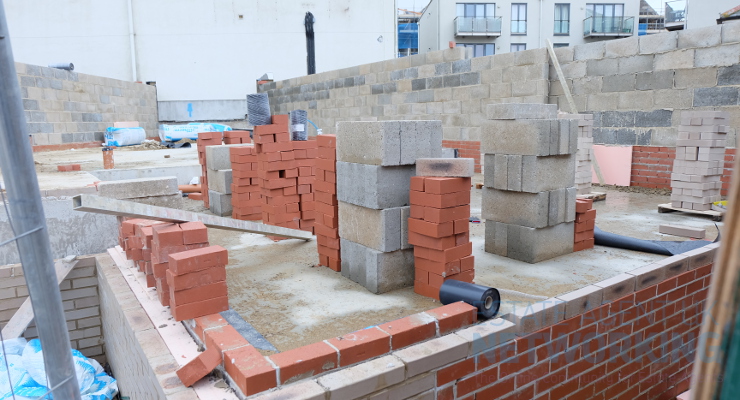9 Steps To Buying A New Home
Looking to buy a new home this year? The decision itself is an important one but it’s only the beginning of an often-difficult process.
If buying a house sounds like a lot of work, it’s because it is. Here are nine steps you’ll need to take to buy a new home.
1. Find Out If You Have What You Need
Wanting to buy a property and having what is required to buy a property can often be two different things.
To start, you’ll need to make sure you have a strong credit score. The highest your credit score, the lower your monthly mortgage payments and interest rate could end up being.
Next, you’ll need to determine whether you have enough money in savings to make a down payment. Unless you qualify for a USDA loan or VA loan—requiring no down payment—you should anticipate needing to make a down payment between 3.5% and 20% of the price of the home.
Finally, you’ll need to make sure you have copies of your recent tax returns. Some lenders will only look at last year’s return to determine if you’re eligible, while others may look at returns from the past two or three years.
2. Determine What You Can Afford
Now, it’s time to come up with a realistic budget.
Compare your monthly expenses and debts with your current income. Although there are exceptions to the rule, it’s recommended that your monthly mortgage doesn’t exceed 30% of your monthly gross income.
You’ll also be required to pay for home-related expenses, such as property taxes and homeowners insurance. Be sure to factor these into your budget as well.
3. Get Preapproved for a Mortgage
While you may believe you can afford a mortgage, a lender will stillneed to confirm this for you to be confident. What’s more, preapproval gives the seller of your future home confidence that you can follow through after you make an offer.
The good news is, you can get preapproved for a home loan without committing to one. Many lenders allow you to check your rates and get preapproved in as quickly as a few minutes.
4. Choose a Real Estate Agent
At their best, real estate agents act as trusted guides throughout the home-buying process. They offer advice, answer questions, and assist in tasks that buyers might find difficult.
Today, real estate agents vary from part-time novices to full-time experts. There are also different types of agents, such as commission based agents and full service flat fee realtors. Because the pool of licensed agents is so broad, there are both very good agents and very bad agents. Think about how your realtor should treat you and choose one who can meet your needs and expectations. You may also want to consider using an American real estate agent app to help you get started.
While you can pursue homeownership without the help of a real estate agent, it might be in your best interest to work with one—particularly if you’re a first-time buyer.
It’s estimated that roughly 87% of buyers worked with real estate agents in 2020, so teaming up with one is certainly the norm.
5. Start Looking at Houses
Before you officially start searching for homes and booking house tours, sit down with your spouse or partner to discuss the kind of home you want to target.
Go over all of your different wants and needs, and create a spreadsheet that ranks all of your priorities from highest to lowest. Then, give this spreadsheet to your realtor so that they are crystal clear on what elements you value most.
Now, it’s time to start checking out homes!
Remember, there are millions of homes out there. You don’t want to merely settle on a home you’ll be occupying for, potentially, the next 30 years of your lives. It’s perfectly OK to wait for your ideal home to come along.
6. Make an Offer
Once you’ve landed on a home you want to buy, you’ll need to submit an offer for the house.
As offer letters can often make or break your chances at winning the bid for a house, this is an area where your real estate agent’s experience might prove to be helpful.
You should get as much as possible in writing so that the seller knows exactly what you’re looking to get with your purchase. At this point, the seller may accept your offer, decline your offer, or come back with a counteroffer.
Sometimes there are multiple counteroffers, and you might need to negotiate the price or various elements of the home extensively before both parties ultimately agree.
7. Arrange for an Inspection
If your offer is accepted, your home-buying journey has begun—but it’s not quite over.
Once the property is under contract, you’ll want to schedule a house inspection as soon as possible. An inspector will visit the home in-person and review it thoroughly.
Here, the inspector will be looking for any foreseeable issues. Often, they will catch current defects or problems with the house, but sometimes they will identify small mistakes or errors that could lead to potential problems down the road.
Don’t underestimate the importance of an inspection. According to a recent survey of buyers who had home inspections, 86% of their inspectors identified at least one issue.
8. Get the Home Appraised
Next, you will need to get an appraisal for the property.
Many people conflate the terms inspection and appraisal, but it’s critical to note that these are two very different events.
While inspectors look for problems, appraisers are more focused on value. An appraiser is typically a certified professional who will estimate the value of the home, taking all factors into account—including build quality, neighborhood, and more.
If problems are found during inspection or discrepancies between the home’s value and asking price during appraisal, this is often referred to this as ammunition. You can take these issues to the seller to negotiate discounts, credits, repairs, or replacements.
Pay close attention to the areas of concern during your final walkthrough of the home and ensure that they have all been addressed.
9. Close Out the Sale
Finally, you’re ready to be a homeowner!
While the process of buying a home may seem daunting, take comfort in knowing that roughly 842,000 houses found new owners last year.
Leading up to your closing date, your lender will send you a closing disclosure. This is essentially a checklist that will outline everything you’ll need to bring with you to the closing.
Make sure you take your time to review all figures and documents thoroughly to ensure they all line up. If everything looks correct, congratulations—you’re now the proud owner of a new home!









